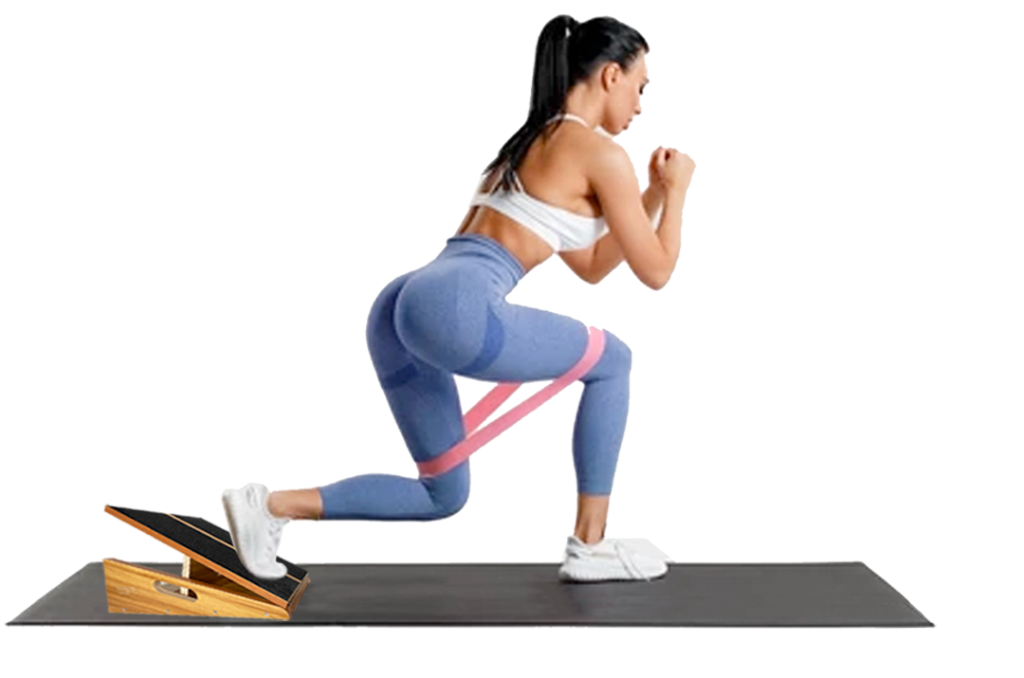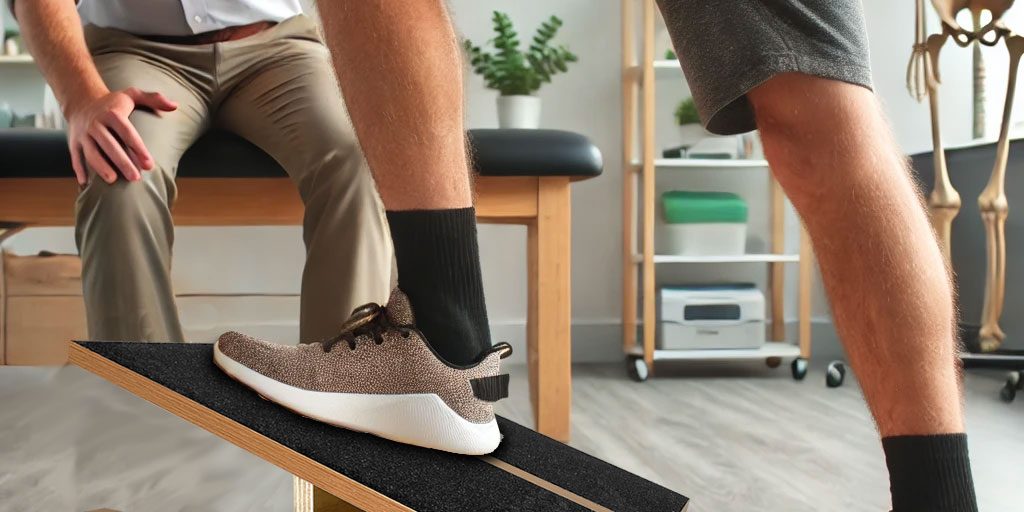An incline board, sometimes referred to as a slant board, might just be the fitness tool you didn’t know you needed—but once you try it, you’ll wonder how you ever lived without it. This simple piece of equipment is a favorite in physical therapy clinics and gyms alike, serving as an essential tool for both injury recovery and strength training. Whether you’re an athlete, weekend warrior, or someone recovering from an injury, an incline board can help you level up your flexibility, power, and resilience.
What exactly does an incline board do?
At its core, an incline board is designed to provide a controlled and targeted stretch to the muscles in your legs, especially the calves, hamstrings, and Achilles tendon. By positioning your foot at an incline, you create a deep stretch that’s hard to achieve through traditional flat-ground stretches. But it’s not just for stretching! Incline boards are also used to assist with deep squats, making it an ideal tool for strength and power building.

Why Physical Therapists love incline boards for patient injury rehabilitation?
Incline boards are a go-to tool for physical therapists for several reasons. The controlled angle allows patients to target tight muscles and tendons effectively, offering gradual, safe stretches without the risk of overstretching or injury. It’s especially useful in treating conditions such as:
- Calf Strains: A strained calf can cause discomfort and limit mobility. By using an incline board, therapists can help patients slowly increase flexibility and strength in the calf muscle.
- Plantar Fasciitis: People suffering from plantar fasciitis benefit greatly from using an incline board to gently stretch the plantar fascia, easing pain and promoting recovery.
- Knee Injuries: Incline boards can assist in strengthening the quadriceps and other muscles that support the knee, which is crucial for recovering from knee surgeries or injuries.
- Achilles Tendonitis: The angled position on the board helps stretch and strengthen the Achilles tendon, promoting recovery while reducing the risk of further injury.
- Shin Splints: Incline boards help stretch the calf muscles and Achilles tendon, alleviating pressure on the shinbone and reducing pain associated with shin splints.
How to use an incline board ?
While physical therapists use incline boards in a controlled clinical setting, they’re also perfect for home use. If you’re recovering from an injury, adding an incline board to your routine can help maintain the progress you’ve made in therapy and continue to build strength and flexibility.
You can incorporate it into your stretching routine to target tight calves or strained Achilles tendons, or even use it as part of your warm-up to prevent injuries.
For athletes and fitness enthusiasts, an incline board offers more than just a deep stretch. It’s also great for building strength.
One of the most popular uses is for deep squats. Performing squats on an incline board allows for a more comfortable squat depth, encouraging greater range of motion and helping to build power in the legs. It’s a fantastic way to target the quads and hamstrings while improving mobility and flexibility.
What’s the best angle to use an incline board?
Choosing the right angle is key to maximizing the benefits of an incline board, but it ultimately comes down to personal preference and your goals. The most common incline options range from 20° to 40°, however having an incline board that offers at least 5 different angles will make it ideal to enable deeper stretches as you progress with injury recovery treatment, or as you improve your calf flexibility and muscle strength.
- 20° incline: This is ideal for beginners or people dealing with significant tightness in the calves or Achilles tendons.
- 30° incline: Great for intermediate users who are looking for a moderate stretch without overextending.
- 40° incline: Best for advanced users or athletes looking to push their flexibility and range of motion to the next level.
How does an incline board help with injury recovery?
- Improved Flexibility: Regular use of an incline board helps loosen tight muscles and improve flexibility in the calves, Achilles tendons, and hamstrings.
- Injury Prevention: Stretching on an incline board helps prevent injuries by maintaining muscle elasticity and flexibility, making it an essential tool for athletes.
- Pain Relief: For conditions like plantar fasciitis or Achilles tendonitis, incline boards provide much-needed relief by easing tension and promoting healing.
- Strength Building: Incline boards allow for deeper squats and other strength-building exercises, targeting leg muscles in a way that flat ground can’t match
Frequently asked questions about incline boards
It’s important to listen to your body—start with a lower incline and work your way up to deeper stretches as your flexibility improves.
Q: Can I use an incline board if I’m not injured?
Absolutely! Incline boards are great for injury prevention, flexibility, and strength building, making them perfect for athletes and anyone looking to improve their fitness routine.
Q. Where can I purchase a professional incline board to use at home?
Browse Amazon.com for BAM’s professional incline board slant board for the latest deal and Prime delivery in 1-2 days.
Q: How often should I use an incline board?
For injury recovery, you should follow the guidance of your physical therapist. For general flexibility and strength building, using an incline board for 5-10 minutes a day can make a big difference.
Q: Is an incline board safe for beginners?
Yes! Just start with a gentle incline and work your way up as your flexibility improves.
Here are three additional popular FAQs people often search for on Google about incline boards:
Q. What muscles do incline boards target?
Incline boards primarily target the calf muscles, Achilles tendons, and hamstrings, but they can also benefit the quads and glutes when used for exercises like deep squats. They’re effective for stretching and strengthening the lower body muscles thus why incline boards, or slant boards are great calf stretching and treating plantar fasciitis.
Q. How long should I use an incline board each day?
Most experts recommend using an incline board for 5-10 minutes daily, depending on your goals—whether it’s for stretching, injury recovery, or strength building. However, the duration can vary based on individual needs and physical therapist recommendations.
Q. Are incline boards good for plantar fasciitis?
Yes, incline boards are commonly used to treat plantar fasciitis. The incline allows for a controlled stretch of the plantar fascia and calves, helping to reduce tension and pain in the feet.
Incline boards are much more than just a rehab tool. Whether you’re recovering from an injury or looking to boost your athletic performance, an incline board is a versatile addition to any fitness routine. Whether at home or in the gym, it helps you unlock the potential for deeper stretches, improved flexibility, and increased strength.
How does an incline board help with injury recovery?
- Improved Flexibility: Regular use of an incline board helps loosen tight muscles and improve flexibility in the calves, Achilles tendons, and hamstrings.
- Injury Prevention: Stretching on an incline board helps prevent injuries by maintaining muscle elasticity and flexibility, making it an essential tool for athletes.
- Pain Relief: For conditions like plantar fasciitis or Achilles tendonitis, incline boards provide much-needed relief by easing tension and promoting healing.
- Strength Building: Incline boards allow for deeper squats and other strength-building exercises, targeting leg muscles in a way that flat ground can’t match







